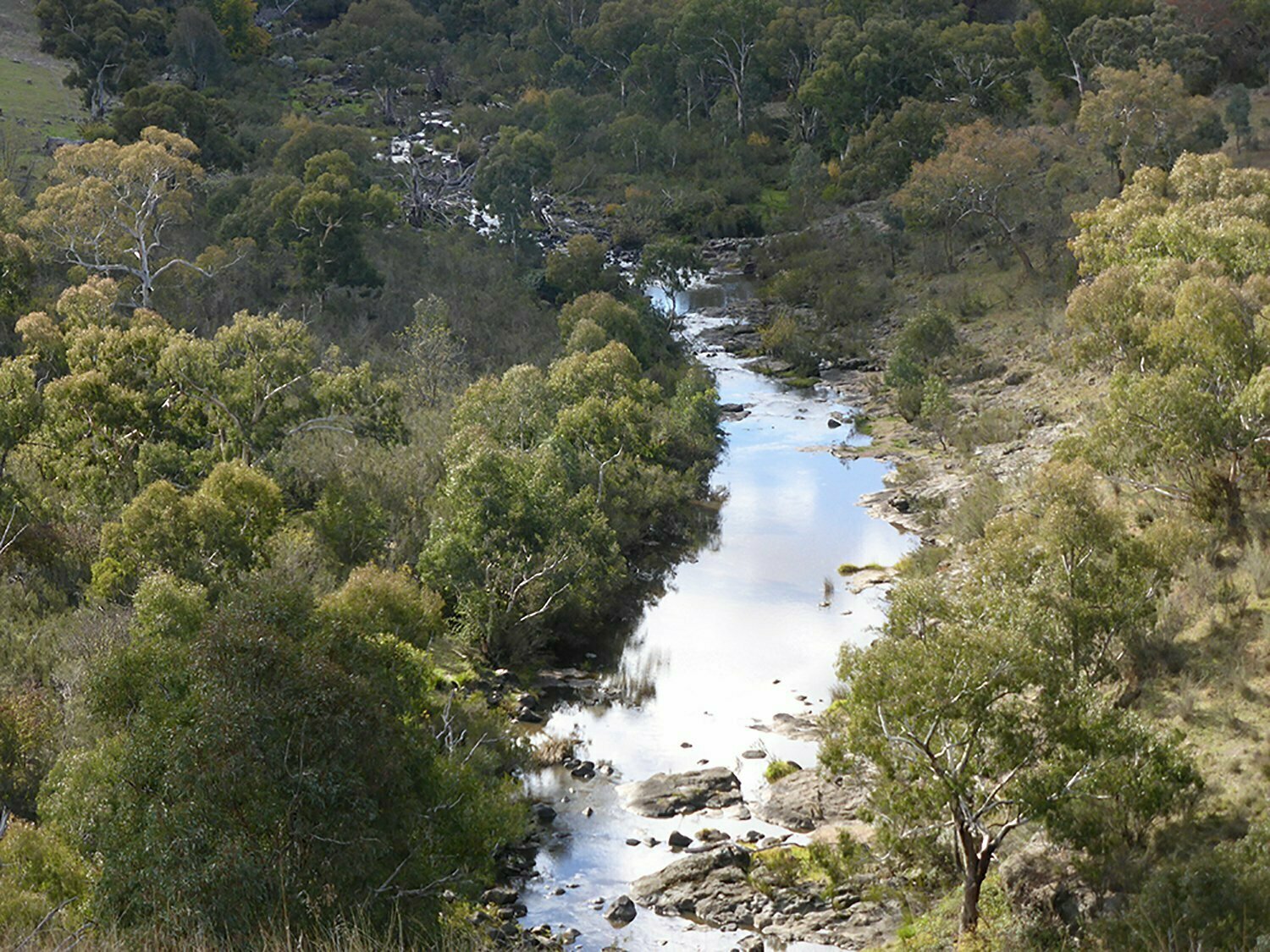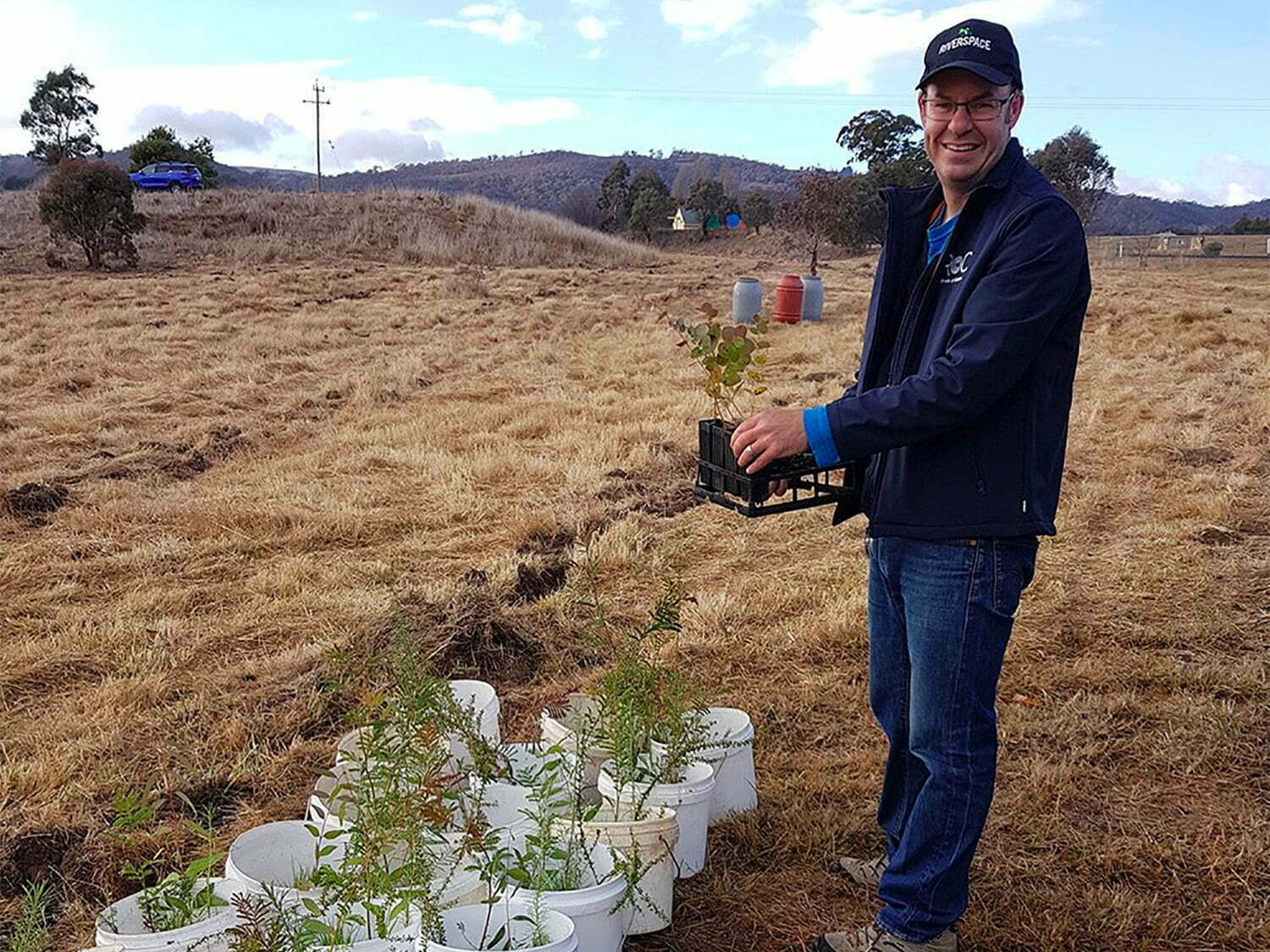
“… the most important area of work to mitigate climate change impacts and protect and conserve biodiversity, is to plant diverse, resilient native vegetation linking existing patches of remnant vegetation to create living corridors”
– Bradshaw etal., Biological Conservation, 161, 2013
The living world around us, on the land and in the water, is based on carbon. Carbon is one of the most abundant elements in the universe and is an essential part of us and our environment – we need carbon to survive. Carbon found in something living is called organic carbon. The organic carbon in living organisms comes from carbon dioxide (CO2) in the atmosphere. Plants and certain microbes use water and CO2 taken in from the atmosphere to produce sugars and starch. This process of carbon fixation is called photosynthesis and is driven by sun light catalysed by enzymes, with oxygen released as a waste product. Animals get their organic carbon by eating plants or by eating other animals. Carbon can be stored in living organisms for extended periods, particularly in plants that have long life-spans, for example, trees. The carbon found in non-living things such as rocks, shells, the atmosphere and oceans is called inorganic carbon.
The carbon cycle describes the complex processes carbon undergoes as it is transformed from organic carbon to inorganic carbon and back again. Carbon is returned to an inorganic state in a number of ways – it as the ultimate in recycling! Both animals and plants release CO2 into the atmosphere through a process known as respiration, in which complex carbon-containing compounds are broken down and energy released. When an animal or plant dies, it is broken down by bacteria and fungi and once again the carbon is released. This process is called decomposition. Living organisms also return carbon to the atmosphere when they are burnt. Instead of completely decomposing, a plant or animal may sometimes be fossilised. This leads to its carbon being stored in a rock. After millions of years and under the right conditions, these fossils may turn into fossil fuels like oil, coal and natural gas.

The carbon cycle comprises a sequence of events that make the Earth capable of sustaining life, and is as important as the nitrogen cycle and the water cycle. Carbon dioxide in our atmosphere not only serves as a source of inorganic carbon for plants and certain microbes, it also helps prevents heat from escaping and in doing so, warms up the Earth’s atmosphere. In a similar way to the glass of a greenhouse, it traps the heat and for this reason, it is called a greenhouse gas. This heat trapping capacity helps keep the Earth’s temperature at a level necessary to support life.
The ‘River of Carbon’ concept:
The term “River of Carbon” refers to a concept within environmental restoration projects where the focus is on connecting landscapes along rivers and streams to promote carbon sequestration. It involves linking reforestation efforts in riparian zones (the areas along riverbanks) with broader environmental goals, such as enhancing biodiversity, improving water quality, and, notably, capturing carbon from the atmosphere to mitigate climate change.
Here’s a breakdown of how it typically works:
- Carbon Sequestration: Trees and other vegetation naturally capture carbon dioxide, a major greenhouse gas, from the atmosphere through photosynthesis. By restoring and enhancing vegetation along waterways, these areas can store more carbon, both in the plants themselves and in the soil.
- Riparian Restoration: This involves planting native trees and plants along riverbanks. These plants not only help to capture carbon but also stabilize the riverbanks, reduce erosion, improve water quality by filtering pollutants, and provide habitat for wildlife.
- Connectivity: The ‘river’ in ‘River of Carbon’ symbolises the continuous strip of land along rivers and streams that is being restored. This connectivity is crucial for wildlife corridors, allowing species to move and migrate, which enhances ecological resilience and biodiversity.
- Climate Resilience: Healthy riparian zones help buffer rivers against temperature fluctuations and provide resistance against climate-related disturbances like floods and droughts.
- Community Involvement: These projects often involve local communities, providing educational opportunities and benefits from improved ecosystem services such as better fishing, hiking, and water quality.
‘River of Carbon’ initiatives are part of a larger movement to use natural solutions for climate change mitigation. These projects are practical examples of how environmental restoration can be directly linked to carbon reduction strategies, making them appealing for conservation efforts, carbon offset programs, and compliance with environmental regulations.
Why sequester carbon?
Human activities release CO2 into the atmosphere – particularly through the burning of fossil fuels (coal, oil and natural gas) and land clearing. The carbon released when fuels are burned is called a carbon dioxide emission, with each fuel emitting a different amount of CO2, as well as carbon monoxide and soot. The amount of CO2 in the atmosphere today is around 30 percent higher than it was 200 years ago. Greater concentrations of greenhouse gases such as CO2 will trap more heat and raise the Earth’s surface temperature, and this is known as the greenhouse effect. This process has been linked to changes in rainfall, temperatures and extreme climate events, often with negative consequences for humanity and our environment.
Carbon dioxide is the most important human-contributed greenhouse gas. Many ways have been identified to help reduce its impact in the atmosphere by reducing or stabilising concentration levels. One approach that is being increasingly adopted is to create ‘carbon sinks’, where carbon sequestration (capture) is greater than releases over the same time period. Revegetating areas enables CO2 in the atmosphere to be absorbed by plants through photosynthesis, and stored as carbon in biomass (tree trunks, branches, foliage and roots) and soils, creating a carbon sink that can have multiple economic, social and environmental benefits.

When we combine our understanding of the importance of biodiversity to sustaining life on earth with the use of carbon sinks to mitigate negative impacts of climate change, we develop projects like Rivers of Carbon (RoC). RoC aims to revegetate and rehabilitate sites to provide a biodiverse carbon sink with multiple benefits, by planting a diversity of native plants. While single species plantations will do the job of sequestering carbon, ‘biodiverse carbon’ provides an additional array of ecosystem services such as habitat for native wildlife, a mix of native vegetation species, a supply of food, leaves, litter and shade for aquatic animals and a reduction in soil erosion and improved aesthetic, social and cultural values.
Rivers are hotspots for biodiversity, encompassing both aquatic and terrestrial systems. A diversity of plants and animals, such as trees, shrubs, grasses, native mammals, birds and fish are associated with rivers and riparian zones. A river of carbon describes the sum total of carbon that is found and can be captured in rivers, riparian habitats and the terrestrial systems they connect with. The phrase encompasses the carbon in the plants, animals and soils that are found in-stream and on the land connected to river systems. As with the carbon cycle, rivers of carbon is a dynamic concept that that is influenced by the cycle of the river itself, the prevailing climate and the management practices in place.

Carbon typically enters rivers in one of two ways. “Terrestrial” carbon originates from the surrounding landscape, that is, from plants, animals and soil, carried into the river by rain, snow melt and wind. “Riverine” carbon comes from algae and plants in the water that make their own carbon. Organic matter in the waterways is digested by microorganisms, insects, and fish. The carbon dioxide they generate and the dissolved inorganic carbon carried into the rivers from on land then return to the atmosphere or are buried in sediments. Rivers create corridors through the landscape for both terrestrial and aquatic species, and provide the perfect system for maximising both carbon sequestration and biodiversity conservation at both site and regional scales.
For more on the science underpinning rivers of carbon, please follow this link.